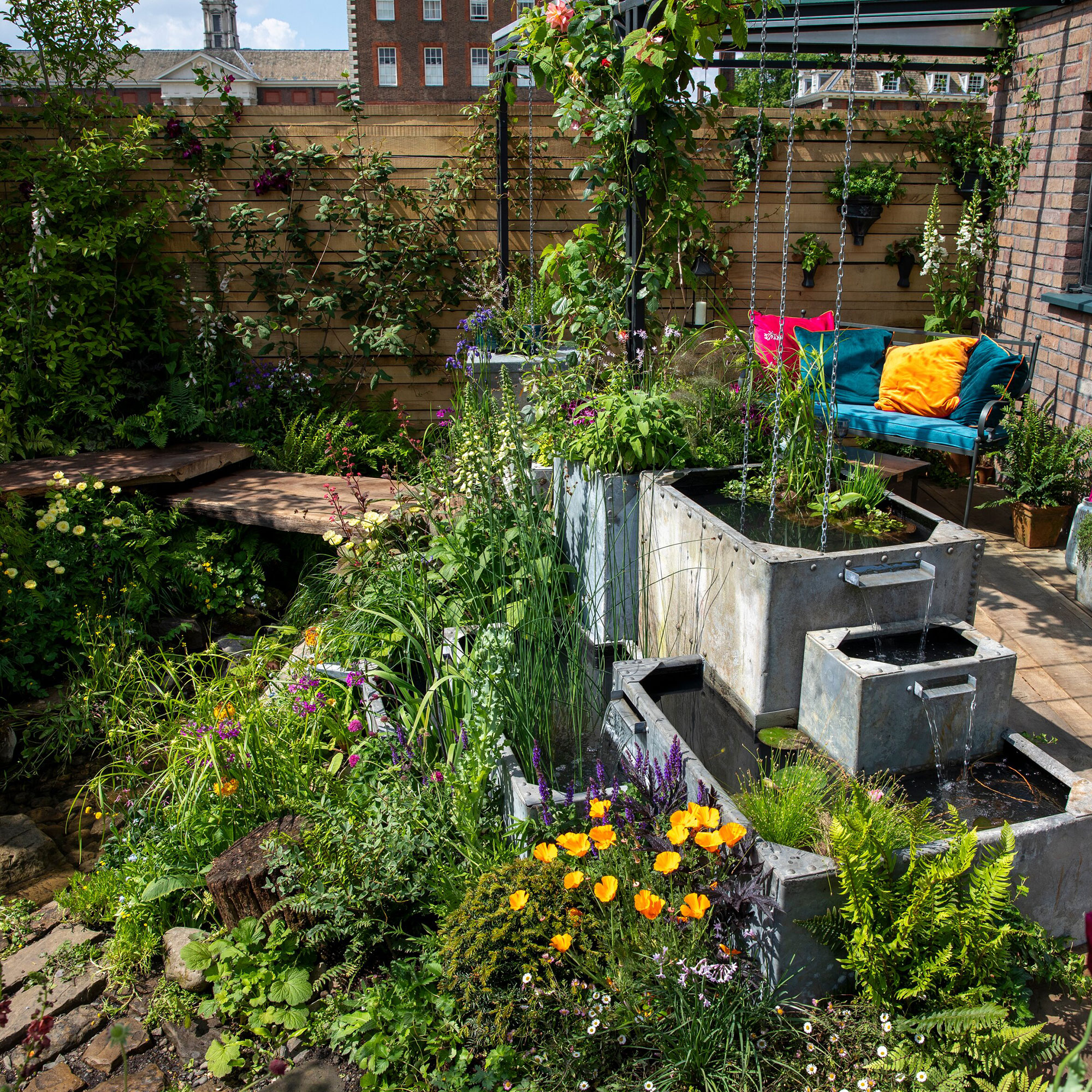
RHS Chelsea Flower Show is 'garden theatre' for lack of a better word. It's inspiring and entertaining, but the level of perfection can make any emerging garden trend feel inaccessible for everyday gardeners like me. That's why at this year's show I made it my mission to track down five RHS Chelsea Flower Show trends that could translate into any garden no matter your skill level.
This is my third time attending the famous RHS show, so I've developed an eye for spotting trends in the mix of show gardens. I also had the opportunity to speak to a number of the designers and the Minister for Nature about the RHS Chelsea Flower Show garden trends that can be taken home and blended into even small garden ideas.
1. Small trees
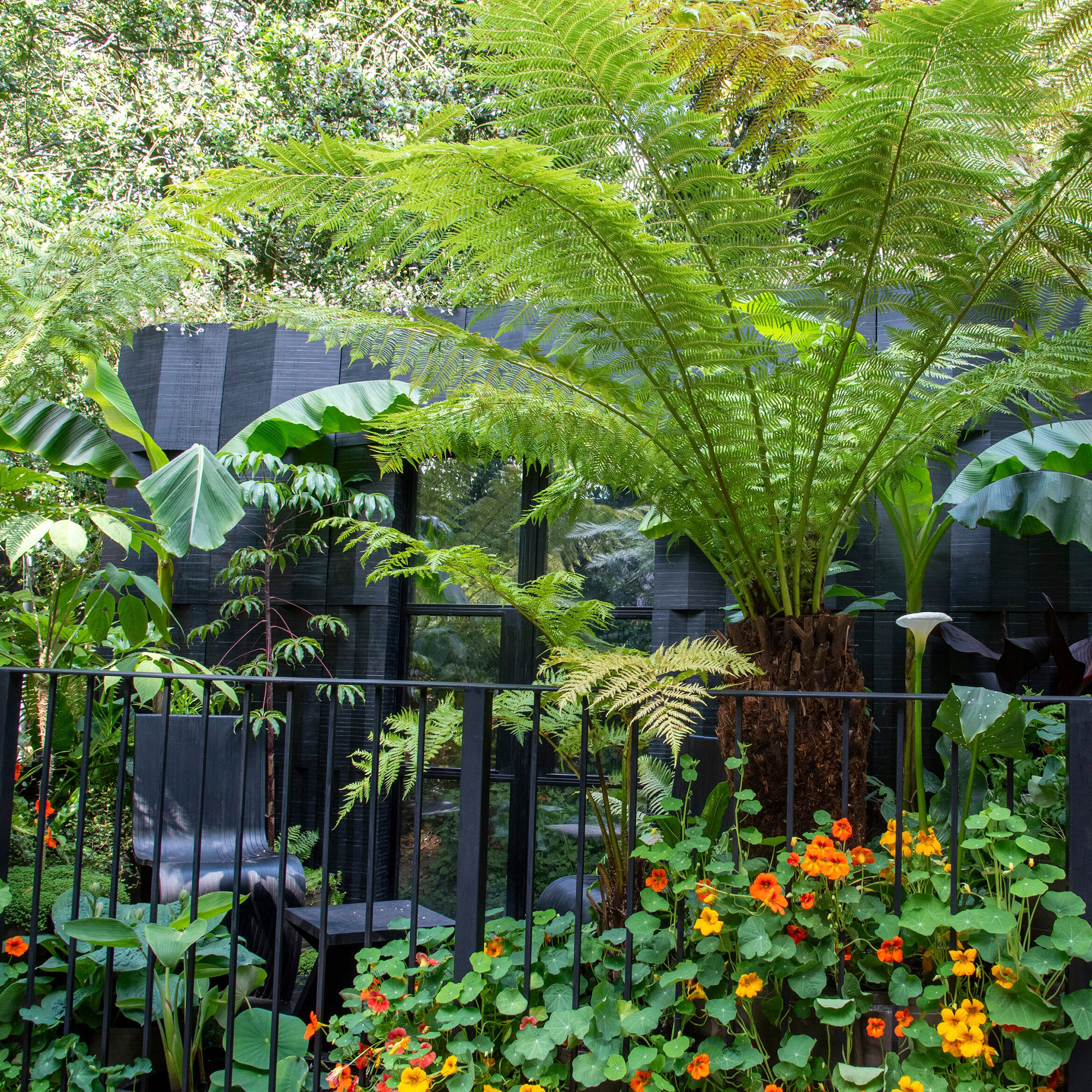
Trees are always a key feature at the RHS Chelsea Flower Show, but this year pint-sized woodlands were out in force. Petite trees were dotted throughout the whole show even in the small container and balcony garden category.
If you're not convinced a tree is going to work on your tiny concrete patch of outdoor space, think again. The Addleshaw Goddard Junglette Garden, a balcony garden based on the designer Mike McMahon's own two balconies in King's Cross, included two potted fern trees to create the framework of a striking canopy. If you have a bit more space to play with consider following the lead of the show gardens by planting birch or pine trees to create shaded groves.
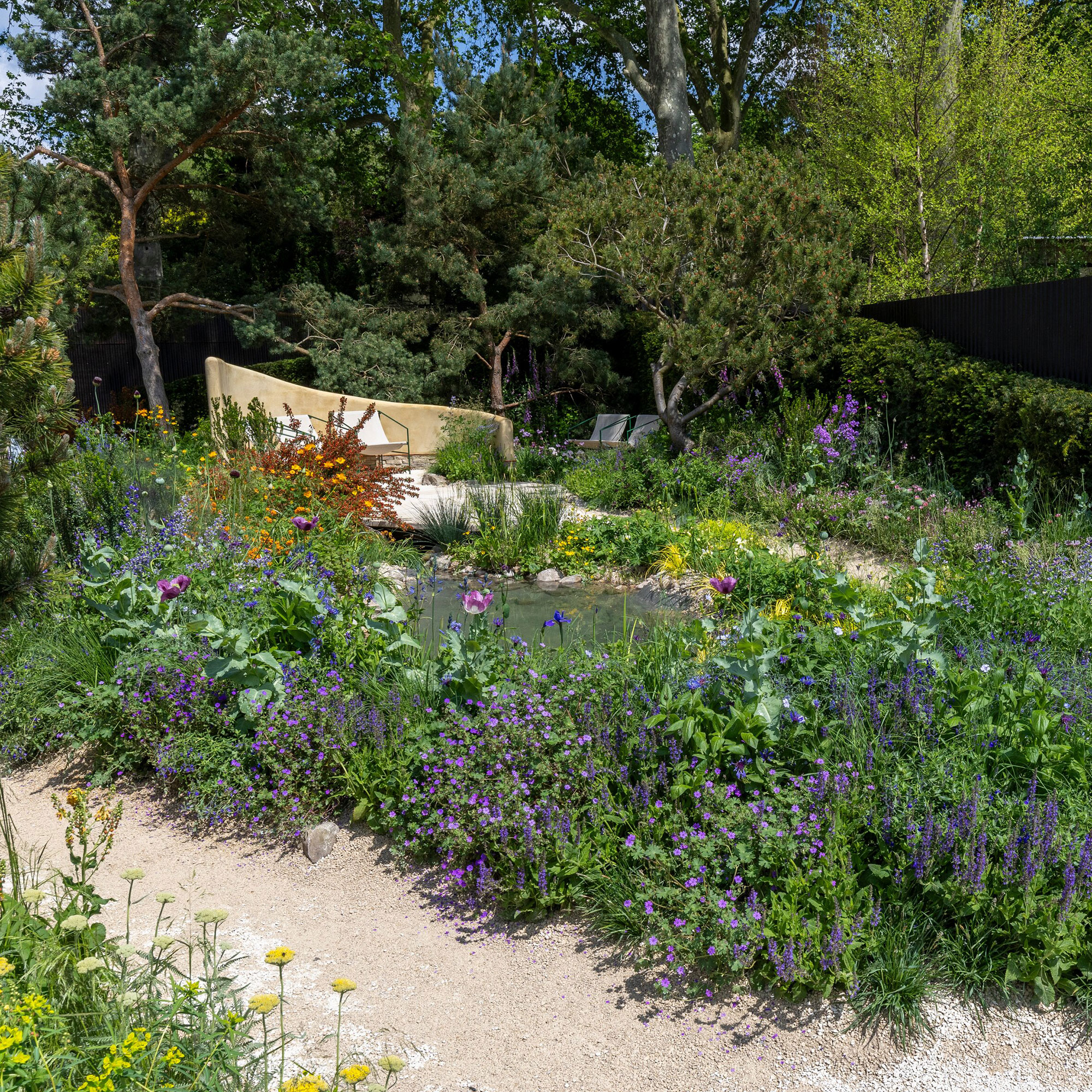
While investing in the best small trees for a small garden can have a higher upfront cost than bedding plants, it is one of the best investments you can make for a garden. Miria Harris, the garden designer behind the Stroke Association's Garden for Recovery, calls them 'the bones' of a garden and if you get them right the rest of the garden will follow.
'If you've got good strong bones when everything else has gone to sleep, you still have the shape of a garden,' she explains, pointing to the pine trees used in her garden as an example of the architectural element they can add to an outdoor space.
2. Enchanted forest gardens
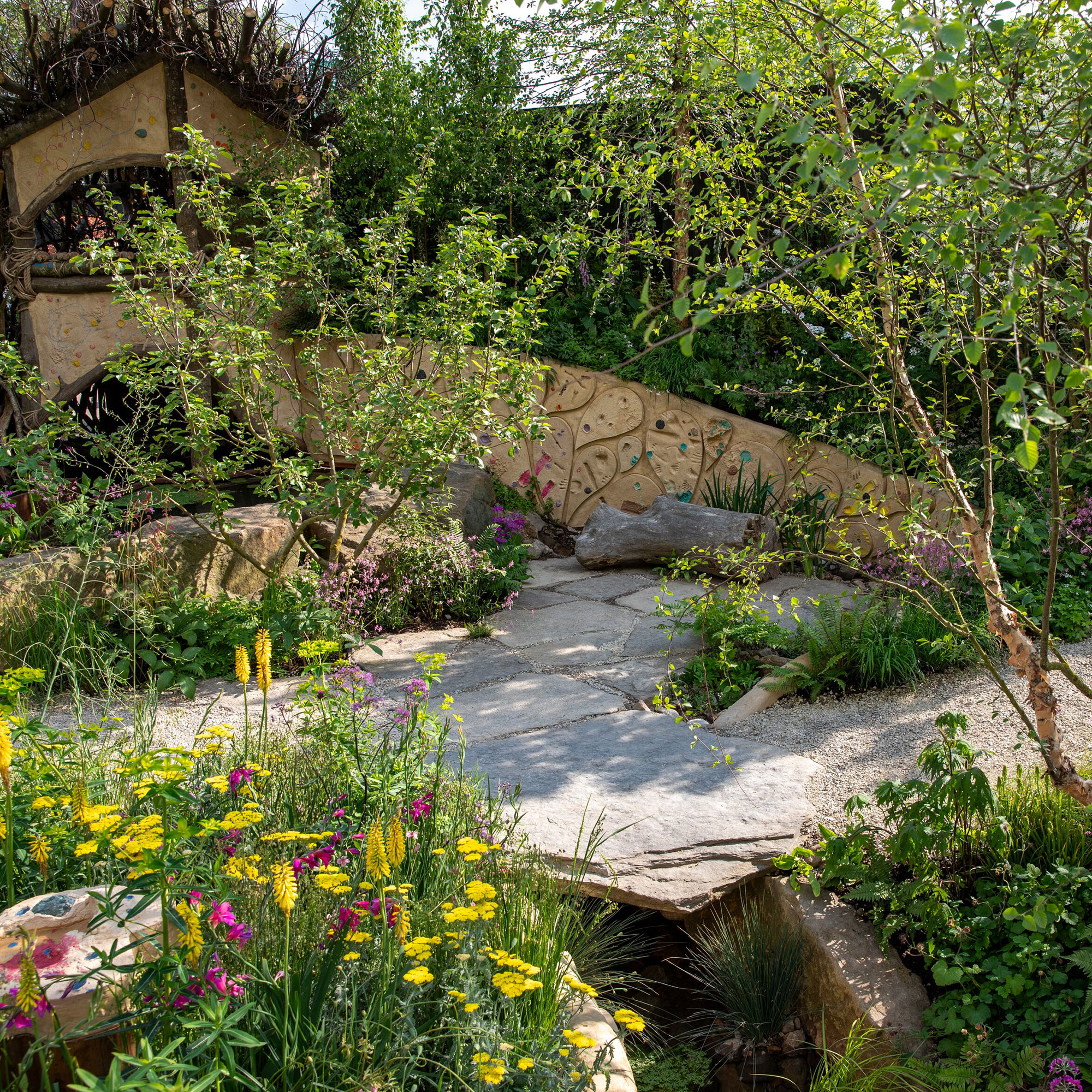
Lush forest gardens could be seen in every garden category at RHS Chelsea. The rich green and purple planting, surrounding wildlife ponds and shaded by trees had a magical enchanted quality.
This trend was used as a child-friendly garden idea in The RHS No Adults Allowed Garden, a garden designed by primary school children. Instead of a lawn to kick a football, it showed how you can create a magical space filled with dens and spaces to explore with plants.
The best part about a forest garden is that it can be achieved with surprisingly little effort. It is predominantly made up of perennials, which require minimal maintenance. The trickiest part is building the different height layers - in general, there should be seven different layers in a forest garden from ground cover, all the way up to a tree canopy.
To build up a forest garden at home you can try layering some of these forest garden favourites from the show: wild strawberries for ground cover; Bistort for the lush herbaceous layer; Hops as a fast-growing climber; Hazel for the shrub layer and Medlar as a beautiful low tree level.
3. Upgraded water harvesting
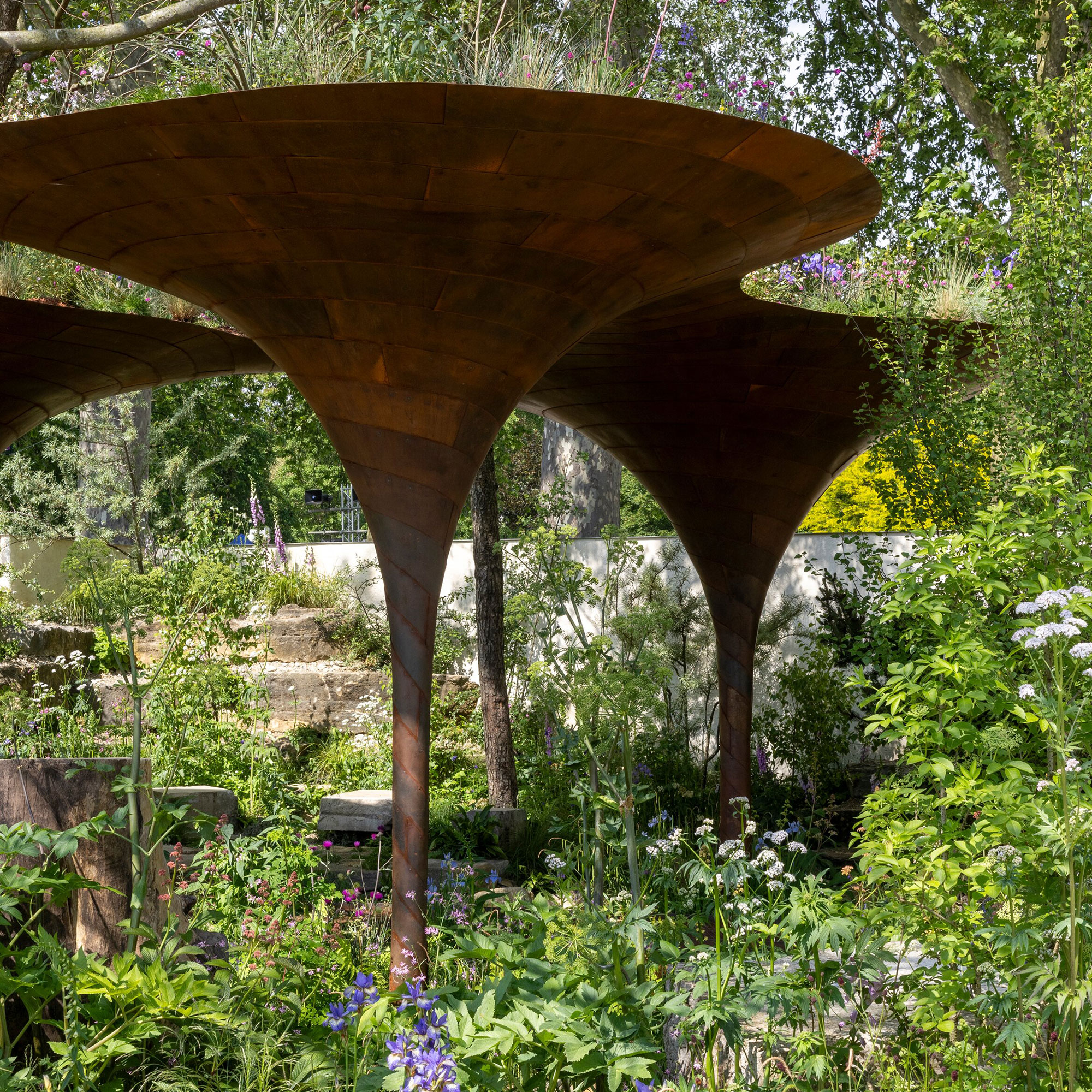
Water tanks, rain chains and water reservoirs were pride of place in many of the gardens, showing that you don't need to settle for any old ugly-looking water butt. The WaterAid Garden was the ultimate inspiration taking water gathering to the next level with a rainwater harvesting pavilion that towered over the garden like a sculpture.

But for realistic inspiration for us meer mortals the Flood Re: The Flood Resilient Garden was filled with genius AND accessible water harvesting ideas. Elegant rain chains direct water off an angled roof into large repurposed tanks that could not only hold 10 bathtubs worth of water, but double as ornamental ponds.
'I think there's so much more we can do in our own gardens to recycle and reuse water,' says Rebecca Pow, Minister for Nature. 'And even to stop the water going into our drains. Yeah, that's half the reason we get problems with sewage; it's all mixed with the rainwater.'
4. Wellbeing gardens
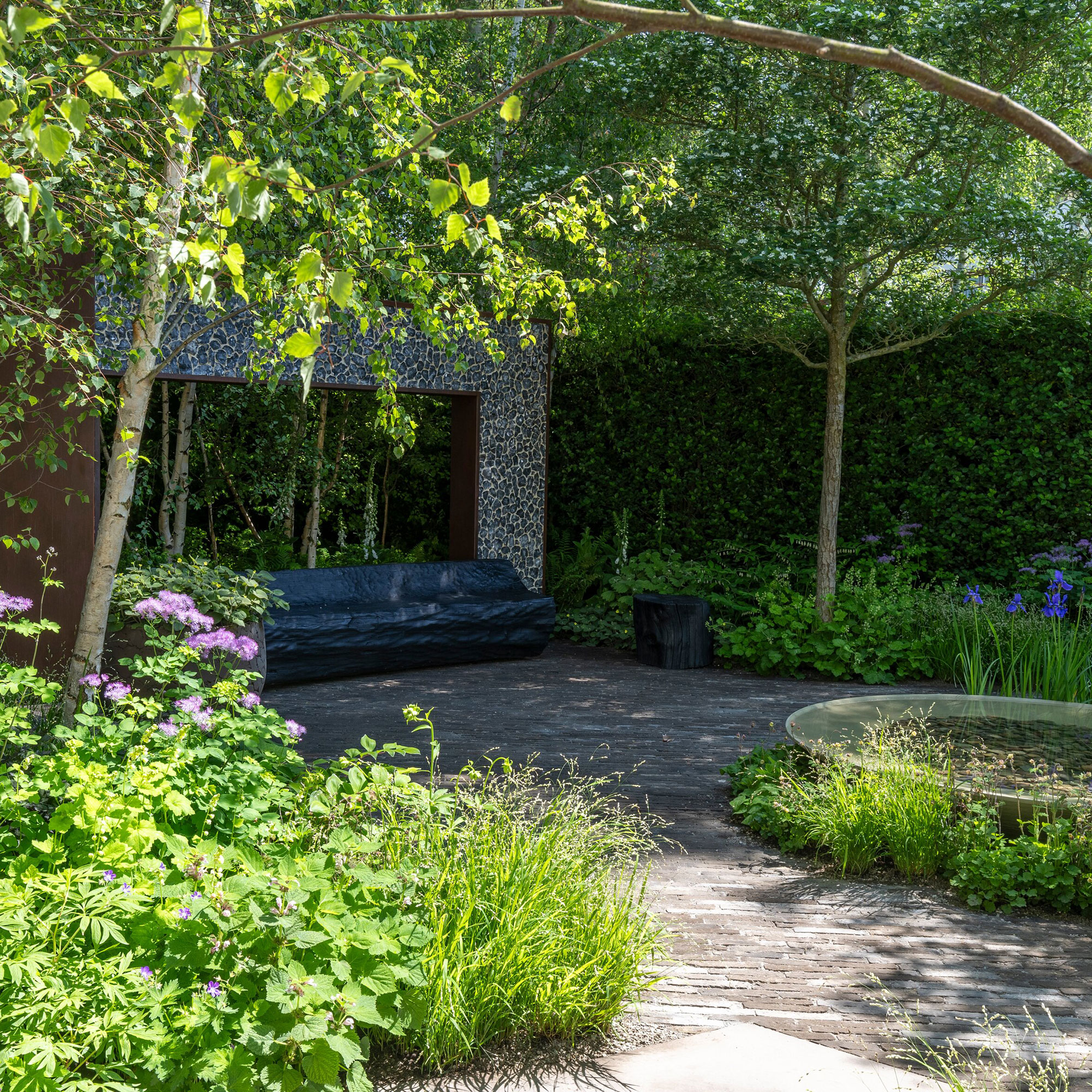
Wellbeing garden ideas is something we're already passionate about at Ideal Home, and it was a clear trend at this year's RHS Chelsea Flower Show. The best part about this trend is it can take many forms in a garden, in The Muscular Dystrophy UK - Forest Bathing Garden, this trend manifested in a beautiful birch tree grove, while in The Stroke Association's Garden for Recovery, it was felt through an immersive sensory garden filled with colourful planting.
What these two gardens did have in common, however, was creating private nooks to sit and reflect. whether this be in the shade of trees, or nestled into sculpted walls. When we plan garden seating ideas we nearly always think about bringing people together, but there is a beauty in carving out a small space for yourself to enjoy a garden in piece.
5. Low maintenance native plants
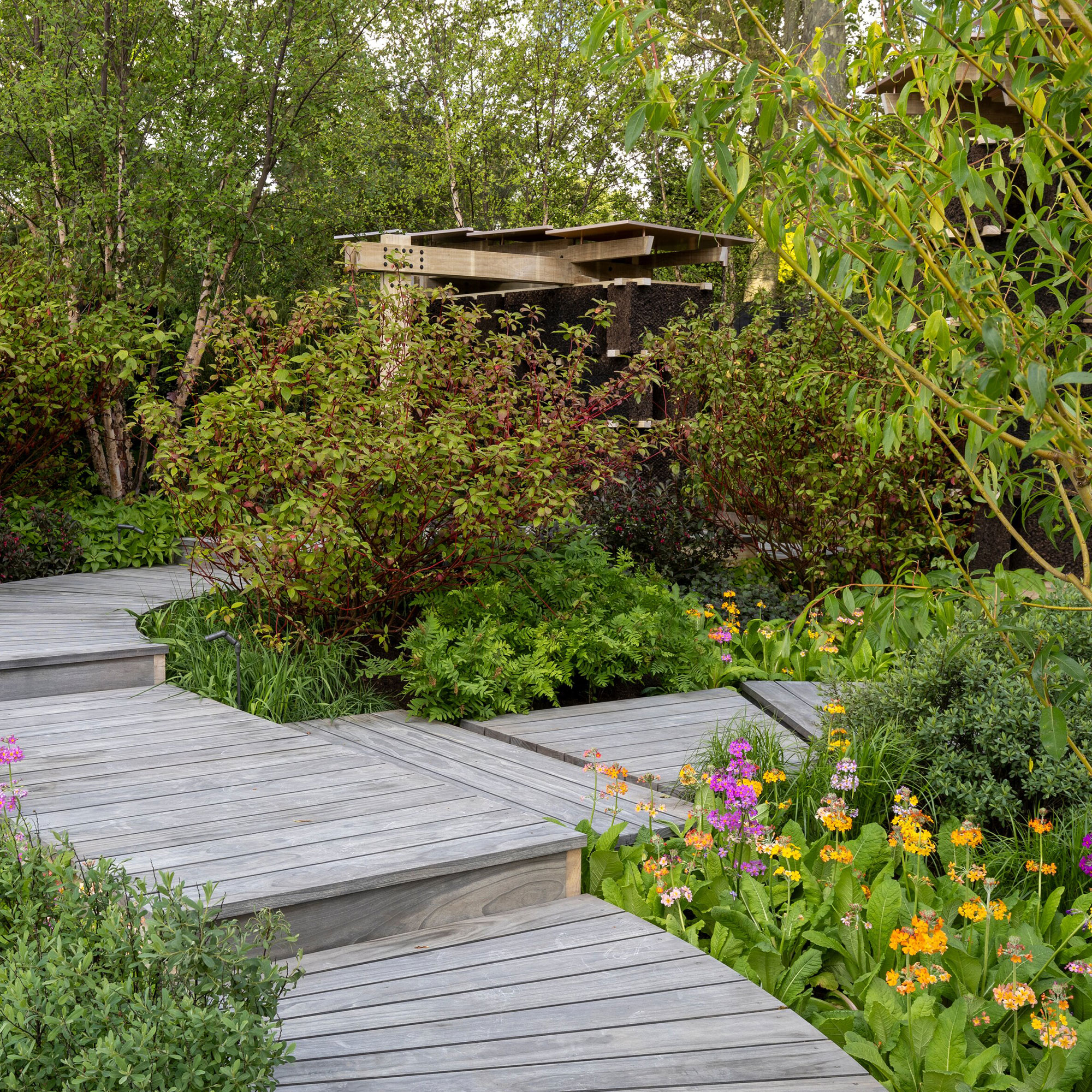
One phrase was echoed by nearly every garden designer I spoke to: 'low maintenance plants'. This year it was all about those low-maintenance native plants that are already adapted to the UK weather and environment. This was demonstrated beautifully in The National Autistic Society Garden which used often overlooked native plants such as hard fern and bog myrtle to create a stunningly verdant garden.
This is a trend that is easy to recreate in your own garden if you do a little research into your garden before venturing out to the garden centre. Edward Barsley the co-designer of Flood Re: The Flood Resilient Garden point out that not every garden in the UK is the same. 'Good design is contextual design,' he explains. 'So we need we need the right plants in the right place. Our gardens are different in parts of the country and in parts of the world, we should be thinking ahead as to what we can do.'
RHS Chelsea Flower Show is always an inspiring day out, but this year I can't wait to try out some of these more accessible ideas in my own tiny outdoor space.






